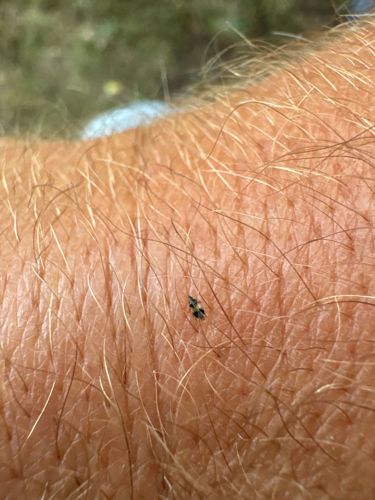Carpet Beetle (likely Varied Carpet Beetle or Black Carpet Beetle larva)
Scientific Name: Dermestidae (family), likely *Anthrenus verbasci* (Varied Carpet Beetle) or *Attagenus unicolor* (Black Carpet Beetle)
Order & Family: Order: Coleoptera, Family: Dermestidae
Size: Larvae are generally 0.2 to 0.5 cm (2-5 mm) long. Adults are slightly smaller.

Natural Habitat
Carpet beetle larvae typically inhabit dark, undisturbed areas where organic matter accumulates. This includes homes (carpets, rugs, furniture, closets), museums, warehouses, and natural environments (animal nests, dead insects). They feed on natural fibers.
Diet & Feeding
The larvae of carpet beetles are scavengers, feeding on a wide range of organic materials including wool, silk, animal hair, leather, feathers, furs, dried meats, museum specimens, dead insects, and even some cereals and grains. Adults primarily feed on pollen and nectar from flowers.
Behavior Patterns
Carpet beetle larvae are typically slow-moving and avoid light. They can often be found in hidden areas. When disturbed, they may curl up. The image shows a larva, which is the destructive stage. Adults are winged and can fly, often found near windows as they are attracted to light.
Risks & Benefits
Risks: Carpet beetle larvae are common household pests. They can cause significant damage to textiles, clothing, carpets, upholstered furniture, and museum collections. Some people may experience mild skin irritation (dermestid rash) from contact with the larval hairs, though they do not bite. Benefits: In natural environments, they play a role in decomposition by consuming animal remains and other organic debris.
Identified on: 9/24/2025